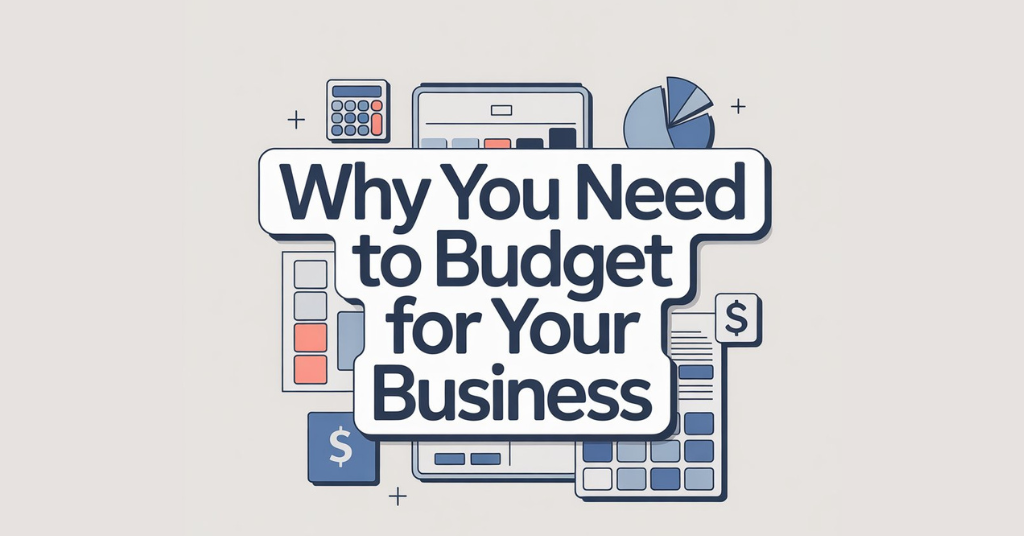Running a business in Australia, whether in Sydney, Melbourne, or a regional town, comes with exciting opportunities—but also significant financial responsibilities. One of the most important tools for managing these responsibilities is business budgeting. A well-planned budget provides clarity, guides decision-making, and ensures your business remains sustainable and profitable.
In this comprehensive guide, we will explore why you need to budget for your business, provide practical examples with calculations, and offer actionable tips to help you stay on track financially.
What Is a Business Budget?
A business budget is a detailed financial plan that forecasts revenues, expenses, and profits over a specific period, usually a year. It is more than just numbers—it is a roadmap that helps businesses plan, monitor, and control their finances.
By comparing actual results to budgeted figures, business owners can identify areas of success and areas needing improvement, allowing for better strategic decisions.
Why You Need to Budget for Your Business
1. Gain Financial Clarity and Control
Budgeting provides a clear snapshot of your business finances. This includes:
- Projected Revenue: Estimating sales based on past performance, market research, and seasonal trends.
- Anticipated Expenses: Categorising fixed costs (rent, insurance) and variable costs (supplies, utilities).
- Profit Forecasts: Calculating potential profit by subtracting expenses from revenue.
Example Calculation (Australian Context):
Suppose your café in Brisbane expects:
- Monthly Revenue: AUD 50,000
- Fixed Costs: AUD 20,000 (rent, utilities, insurance)
- Variable Costs: AUD 15,000 (ingredients, staff wages, marketing)
Projected Profit:
Revenue – (Fixed Costs + Variable Costs) = 50,000 – (20,000 + 15,000) = AUD 15,000
With this calculation, you can set realistic targets and monitor financial performance monthly.
2. Improve Decision-Making and Strategic Planning
A budget allows you to make informed financial decisions. You can:
- Allocate Resources Wisely: Invest in areas that offer the highest returns.
- Control Costs: Identify unnecessary expenses to optimise spending.
- Plan Investments: Decide if funds are available for expansion, new equipment, or marketing campaigns.
Example:
A boutique clothing store in Melbourne wants to launch an online store. The budget shows that after covering all operational costs, AUD 10,000 is available for website development and digital marketing. The owner can confidently proceed knowing it won’t jeopardise cash flow.
3. Manage Cash Flow Efficiently
Cash flow management is critical for any Australian business. Even profitable companies can face challenges if cash is mismanaged. A budget helps:
- Predict Shortfalls: Identify months when revenue may be low.
- Plan for Emergencies: Set aside a cash reserve.
- Optimise Working Capital: Ensure timely supplier payments and maintain liquidity.
Example:
A landscaping business in Perth experiences lower demand during winter. Budgeting allows the owner to plan for a reserve of AUD 5,000 to cover wages and equipment maintenance during slower months.
4. Monitor Performance and Accountability
Budgets act as benchmarks for evaluating how well your business is performing.
- Variance Analysis: Compare actual results to budgeted numbers.
- Departmental Accountability: Departments or teams can be responsible for adhering to budget limits.
- Continuous Improvement: Insights from budgeting allow adjustments for better efficiency.
Example:
If your marketing department spends AUD 2,000 more than budgeted on online ads in Sydney, you can investigate the reasons and adjust future campaigns to prevent overspending.
5. Facilitate Funding and Investment Opportunities
Investors and banks want to see that your business is financially organised. A detailed budget:
- Builds Investor Confidence: Shows that you plan finances carefully.
- Supports Loan Applications: Provides detailed projections to banks.
- Improves Valuation: Helps potential partners or buyers understand the business’s financial health.
Example:
An Australian startup seeking AUD 100,000 in funding can present a 12-month budget showing revenue, expenses, and profit projections. This demonstrates financial planning and reassures investors.
6. Aid in Tax Planning and Compliance
Budgeting helps Australian businesses manage tax obligations efficiently:
- Estimate Tax Liabilities: Based on projected profits.
- Avoid Penalties: Plan quarterly GST and income tax payments.
- Identify Deductions: Budgeting helps track deductible expenses for minimising taxes.
Example:
A Sydney-based consulting firm expects AUD 120,000 in net profit. Knowing this in advance allows them to allocate AUD 36,000 for company tax (assuming a 30% corporate tax rate), avoiding last-minute stress.
7. Prepare for Risk and Uncertainty
Business budgets allow scenario planning, helping you prepare for:
- Best-Case and Worst-Case Scenarios: Assess impact of different outcomes on finances.
- Mitigate Risks: Plan for unexpected events like equipment failure or economic downturns.
- Adapt Quickly: Adjust financial strategies in response to changing market conditions.
Example:
A regional café in Queensland may plan two budgets:
- Peak season revenue: AUD 60,000 per month
- Off-season revenue: AUD 35,000 per month
This helps plan staffing, marketing, and inventory efficiently throughout the year.
Practical Tips for Effective Business Budgeting in Australia
- Involve Key Team Members: Collaborate with managers for accurate budgeting.
- Use Technology: Employ accounting software like Xero, MYOB, or QuickBooks for automated budgeting.
- Review Regularly: Conduct monthly or quarterly budget reviews.
- Stay Realistic: Avoid overestimating revenue or underestimating costs.
- Plan for Contingencies: Always include a buffer for unexpected expenses.
Using Calculated Examples to Stay on Track
Consider this scenario for an Australian digital marketing agency:
| Month | Revenue (AUD) | Expenses (AUD) | Profit (AUD) |
| January | 40,000 | 30,000 | 10,000 |
| February | 45,000 | 32,000 | 13,000 |
| March | 50,000 | 35,000 | 15,000 |
By comparing monthly actuals to the budgeted numbers, the agency can adjust campaigns, staff hours, and investments in real time.
Also Read: Top 10 Financial Management Goals of Every Business
Conclusion
Budgeting is more than a financial task—it is a strategic tool for business success. For Australian entrepreneurs, a comprehensive budget ensures financial clarity, improves decision-making, supports cash flow management, and prepares your business for growth and uncertainty. By implementing a robust budgeting process with practical calculations and regular reviews, you are investing in a stronger, more resilient business.
A well-crafted budget is not just about controlling costs—it is about planning your business’s future, maximising opportunities, and ensuring long-term sustainability. Start budgeting today and watch your Australian business thrive.



